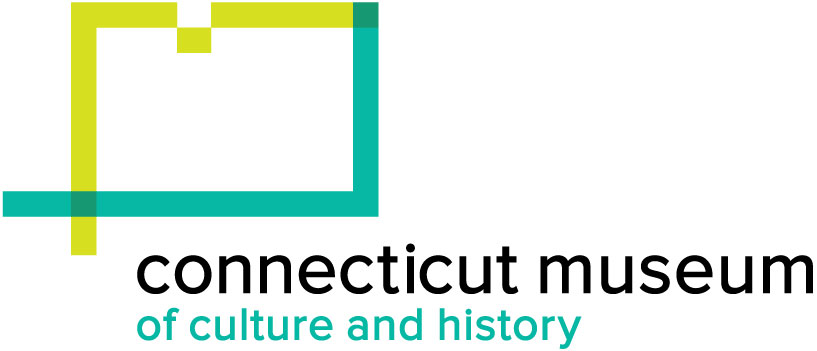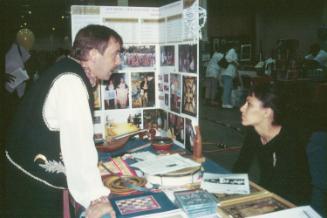Polish Easter Eggs & Wycinanki
Datec. 2000
Mediumpaper
ClassificationsInformation Artifacts
Credit LineConnecticut Cultural Heritage Arts Program collections
CopyrightIn Copyright
Object number2015.196.88.31-.34
DescriptionHandouts describing Polish Easter Traditions, produced by the Polish Cultural Club of Greater Hartford.
2015.196.88.31: handout, Pisanki, Polish Easter Eggs, Polish Cultural Club of Greater Hartford
2015.196.88.32: handout, Folk Paper-Cuts, “Wycinanki”, Polish Cultural Club of Greater Hartford
2015.196.88.33: handout, Polish Easter of My Childhood, Polish Cultural Club of Greater Hartford
2015.196.88.34: handout, The Legend of the Easter Egg, Polish Cultural Club of Greater Hartford
NotesSubject Note: Święta Wielkanocne/Easter Traditions - As the liturgical calendar year continues after Christmas, Catholics observe the forty days of Lent, a representation of the time of Christ’s suffering. For Poles, reflection, prayer, and strict fasting during Lent is preceded by Tłusty Czwartek, Fat Thursday, when Polish Americans traditionally eat pączki, doughnuts filled with fruit jelly or cream. In Connecticut and Massachusetts Big Y Supermarkets promote pączki extensively during the short time in February when the stores make them. After Ash Wednesday, churches hold a Lenten evening service called Gorzkie Zale, during which sorrowful hymns are sung as a meditation on the passion and death of Christ. As Lent draws to its end, Palm Sunday is marked by woven and braided ornaments of palms representing those carried by well wishers along the route of Christ’s procession through the streets of Jerusalem. Another sign of Easter and the renewal of spring can be seen in the wands made of flowers, straw, colored paper, and pussy willows. Because no church bells ring until Easter Sunday, boys call attention to church services by shaking klekotki, wooden clappers. In a custom unique to Polish churches, a recreation of Christ’s grave is built near the altar; parishioners hold a vigil by the grave, bringing flowers and praying.2015.196.88.31: handout, Pisanki, Polish Easter Eggs, Polish Cultural Club of Greater Hartford
2015.196.88.32: handout, Folk Paper-Cuts, “Wycinanki”, Polish Cultural Club of Greater Hartford
2015.196.88.33: handout, Polish Easter of My Childhood, Polish Cultural Club of Greater Hartford
2015.196.88.34: handout, The Legend of the Easter Egg, Polish Cultural Club of Greater Hartford
Easter itself continues to be an extremely important spiritual celebration in Polonia. Symbols of renewal, resurrection, and new life from both spiritual and agricultural worlds appear everywhere in Easter customs. Polish Americans bring baskets of food to the church on Saturday to be blessed by the priest who sprinkles holy water on them. The baskets are taken home and eaten at the Easter breakfast, święconka, which takes place after the sunrise mass, rezurekcja, and its procession. Easter foods include ham or kielbasa; a sweet bread called babka and a round bread with a cross; butter molded into the shape of a lamb and sugar lambs, symbolizing the sacrifice of Christ; and a horseradish relish which denotes the bitterness of Christ’s suffering. Most significant of all the Easter foods, an egg is divided among all those present at the Easter breakfast table as a symbol of unity, the mystery of life, and fertility. One of the best known Polish traditional arts is pisanki, decorative eggs colored originally with onion skins and other vegetable dyes. Different regional designs of lines, dots, flowers, or hearts are “written” in wax on the eggs with pins; some eggs are decorated with yarn and paper cuttings. As they do with wigilia dinners, many community organizations throughout Polonia hold social święconka for members and those whose families are far away.
Subject Note: Wycinanki, pictures made from colored paper cut into shapes, designs, and scenes, are a uniquely Polish art form from the late 19th century. Once used extensively to decorate walls and beams in village houses, talented papercutters still create wycinanki to hang on their walls as a sign of ethnicity. The menu at the Polish National Home in Hartford bears a wycinanka on its cover.
Subject Note: The Polish Cultural Club of Greater Hartford “was established in 1976 to preserve and promote the history, culture, and customs of Poland with fellow Americans." An active organization that has held many meetings at the Polish National Home on Charter Oak Avenue in Hartford, the Club sponsors lectures, seasonal celebrations such as Wigilia at Christmas time, the annual szopka festival, and gives scholarships and support to Scouts groups. The Club collaborates with the Polish Foundation and the CCSU Polish Studies Department and Library in New Britain.
Subject Note: The Polish community comprises nearly 10% of the state’s population, settling here during the late 19th and early 20th centuries when New England’s industrial growth made jobs plentiful in mills and factories. Thousands from rural areas of Poland left behind difficult political and economic circumstances to work in America. A similar movement of people took place in the 1980s, and Polish newcomers continue to arrive, bringing a very different sense of “Polishness” and cultural tastes from the older immigrants. Uprooted from their homeland and all that is familiar, these new Americans have found refuge in maintaining traditional customs, beliefs, foods, language, and joining together in fraternal, cultural, political, academic, and veterans societies. Parish churches fill a very important function as centers for social organization and cultural unity as well as providing spiritual and emotional comfort. The Polish saying Co kraj, to obyczaj explains that in the American Polish communities called Polonia some of the old practices change to fit new circumstances, or disappear altogether among recent generations.
The seasonal round of celebrations, festivals, holidays, along with the activities and art forms associated with them, connect Polish Americans to a dimension of beauty, meaning, spirituality, and heritage which they remember from the past but also practice today. In Connecticut works of art and everyday objects for use in the home are still made by hand in traditional Polish styles. Older objects from Poland are often redecorated with materials found here, and the process of creating and using these pieces shows an active expression of identity, not a mere recreation of old folk art forms.
New Britain, the center of Polonia in Connecticut, has a longstanding language school and folk dance group. Central Connecticut State University hosts the Polish and Polish American Studies Program and Library – one of only two such programs in the country. Broad Street is a thriving center of Polish commerce and activity, and has hosted an annual festival since 2012 called “Little Poland.” The festival is held in late April to mark Poland’s Constitution Day, a celebration of the democracy enjoyed by Americans under their country’s Constitution. In Hartford, the historically Polish neighborhood around Wyllys St/Popieluszko Court/Charter Oak Avenue included SS Cyril and Methodius Church, the Church School, the Polish National Home, and several businesses.
Community celebrations and seasonal holidays often follow the liturgical calendar of the Church. Christmas is celebrated with Pasterka, the midnight mass of the shepherds when koledy, holy carols, are sung. On the Feast of Epiphany, chalk is blessed in the church and used to inscribe door lintels with K + M + B, the initials of the three kings. At Easter, baskets of food for the Easter breakfast are blessed in the church. Processions mark Corpus Christi, the Feast of the Blessed Sacrament (and a ritual to ensure good crops) in June. In the late summer, harvest festivals called Dożynki featuring an open-air or church Mass with a blessing and distribution of bread, folk dancing, craft and food vendors are held in New Britain, Bristol, and Bridgeport/Ansonia. Harvest ornaments, large structures of wheat sheafs decorated with flowers and ribbons, are made and displayed by community artists. On All Souls Day in November Polish families visit the graves of their relatives, decorating them with candles and flowers after an outdoor mass.
Additional materials exist in the CCHAP archive for this community.
Cataloging Note: This project was made possible in part by the Institute of Museum and Library Services MA-245929-OMS-20.
Status
Not on view2000-2001 December-March

















